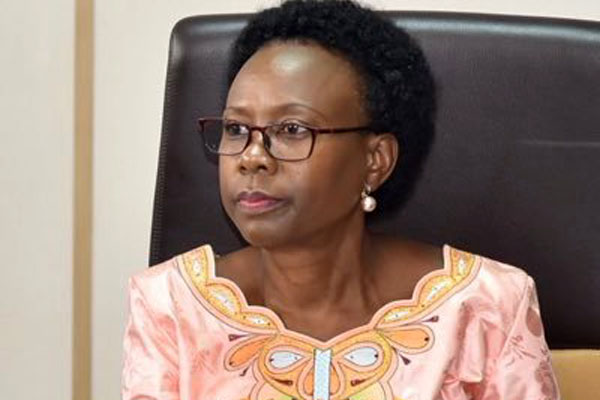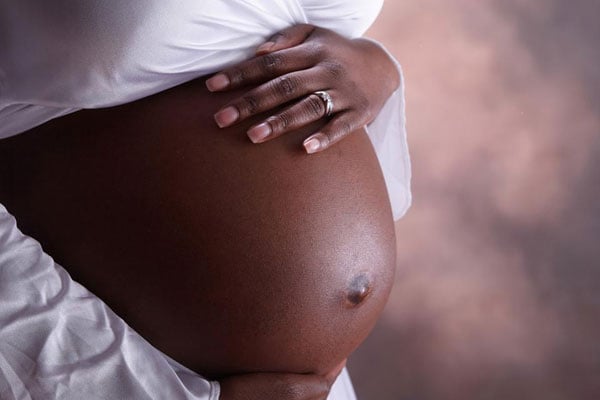Inside Health ministry’s Covid-19 response plan

Health Minister, Dr Jane Ruth Aceng. PHOTO/ FILE
What you need to know:
In preparation for third wave, the government seeks to increase efficiency in the Covid-19 fight and reducing deaths
The Ministry of Health has revealed plans to shield the population from the catastrophic effects of Covid-19 in the ongoing second wave and in the event of the third wave.
The experts at the ministry said the risk of the third wave is imminent because only five per cent of the target 21.9 million people is vaccinated, evident non-adherence to Covid-19 prevention measures in communities, and threats from new variants of the coronavirus.
Since its onset last year, the Covid-19 pandemic, which has seen Ugandans suffer two nationwide lockdowns to curb transmissions, a total of 93,282 people were infected and 2,632 have died from the virus, although daily cases of infections have been on the decline due to the second lockdown, which ended yesterday.
Vaccination
In preparation for third wave, the government seeks to increase efficiency in the Covid-19 fight and reducing deaths. The government has tagged this on vaccines for the population, followed by sorting out the shortage of oxygen for patients and addressing problems in accessing emergency medical services.
The other plans include increasing the capacity of health workers to handle critically ill patients, availing enough personal protective equipment (PPE) to health workers and addressing problems in their allowances.
Dr Jane Ruth Aceng, the Health minister, told Parliament’s Health Committee on Wednesday that government has enough PPEs for health workers which are available in National Medical Stores (NMS) and the distribution is continuous.
“PPE worth Shs108b have been procured, while orders worth Shs187.8b are in the pipeline,” she said in a statement Daily Monitor got yesterday.
She added: “It is important to note that PPEs are consumable items that are continuously being used and require continuous replenishment. It also requires that those in the facilities order and make correct projections in a timely manner.”
Emergency medical services (EMS)
Dr Aceng, told the MPs on Wednesday that the country has a gap of 225 ambulance vehicles and requires a dedicated budget.
“Government has allocated Shs6.8b under the Covid-19 supplementary fund for running of 116 road ambulance vehicles and three water ambulance vessels for Quarter 1 of 2021/20 22. Each evacuation takes about Shs196,000 per patient and in Kampala, each ambulance use Shs980,000. For a referral from Arua to Kampala, one patient route will take about Shs2 million,” she said.
Dr Aceng also revealed that the costs cover fuel, allowances, PPEs, oxygen cylinders, service and repairs.
Oxygen supply
On the problem of oxygen supply, the Health minister said they are in the process of enhancing the existing oxygen production, supply, therapy equipment and accessories in all the national and regional referral hospitals.
“[The] ministry has started the process of procurement of Pressure Swing Adsorption (PSA) oxygen plants to be installed in each of the 15 regional referral hospitals and Bombo hospital. In addition, a PSA plant with a bigger capacity will be installed at Mulago hospital. Furthermore, three cryogenic (Liquid) plants will be procured and placed strategically in three regions to enhance oxygen production,” she said.
ICU beds
The minister said the government has installed 143 Intensive Care Unit (ICU) beds in hospitals during the pandemic, but that they are struggling to get specialists to operationalise the units because they are not readily available in the country.
The critical staff required to run ICUs include anesthesiologists, intensivists and critical care nurses. The Association of Anesthesiologists of Uganda had highlighted the shortage of ICU specialists earlier when government was installing ICU beds.
“The few who are available prefer working in the private sector, which pays higher salaries. However, the Ministry of Health has conducted in-house training for 301 nurses in critical care. These have been deployed to various Covid-19 treatment units– both in public and private facilities. An additional 100 nurses are undergoing training, which will be completed in August,” she said.
The minister said they reached out to the leadership of the Association of Anesthesiologists of Uganda to recommend specialists who can take up these positions in government.
Some hospitals such as Gulu, Hoima and Masaka lack space to install some of the ICU equipment, according to reports from the management and the ministry.




